Display: A Creator’s Dream, a Gamer’s Paradise
The 18-inch UHD+ Mini-LED panel is arguably the Raider’s most stunning feature. MSI lists this series as having the world’s first 18” 4K Mini LED 120Hz Display. With a 3840×2400 resolution, 120Hz refresh rate, and VESA DisplayHDR 1000 certification, it’s a creator’s dream and a gamer’s paradise. It’s one of the best laptop screens we’ve ever used. The contrast and color accuracy are phenomenal, making it perfect for editing high-resolution video or simply enjoying cinematic games.
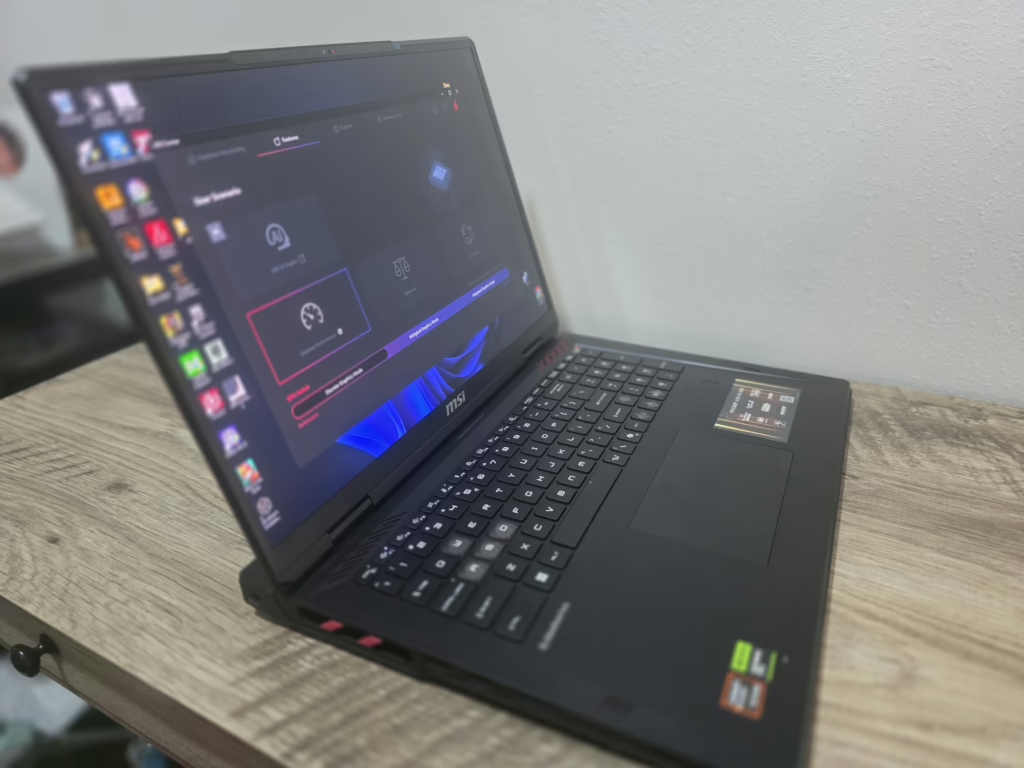
The cooling system is robust, keeping the powerful CPU and GPU within acceptable thermal limits even under heavy load. The laptop features a dedicated heat pipe to cool the Gen 5 SSD, and it shows: in testing, MSI shows it as being on average 10 degrees cooler. The downside is the fan noise, which can be loud during demanding tasks but it is not unbearable by any means.
Brightness peaks at 1000 nits, and contrast is phenomenal thanks to the local dimming zones. Whether you’re editing HDR video or losing yourself in Baldur’s Gate 3, this display delivers. The lack of G-SYNC limits its gaming chops slightly, though tearing was minimal in real-world use. When we asked MSI about G-SYNC, they stated the licensing was not sought due to its pricing and structure, but FreeSync is available and works.
I did hope, however, that MSI would consider OLED or a dual-refresh technology. I asked MSI about this, and they mentioned the technology was interesting and they were considering other options, but at 4K, this was their best choice for creators and gamers. I was consistently maxing out the 120Hz refresh rate with older or competitive gamers, especially when I lowered the resolution to maximize performance, and the CPU/GPU combo was itching for a higher refresh rate monitor.
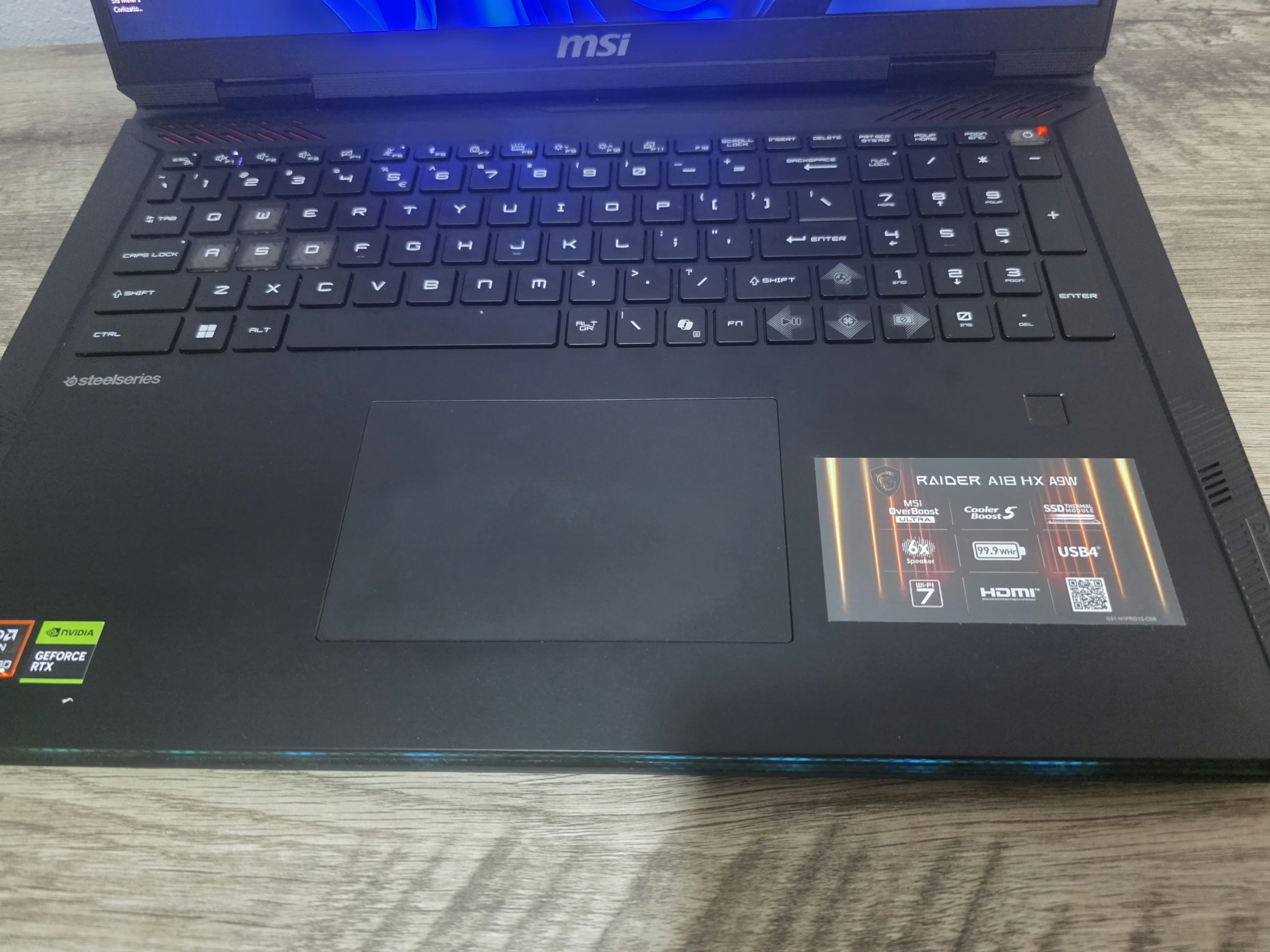
Build & Design: Heavy Metal, Heavy Power
The 99.9Wh battery — the legal flight max — might suggest some endurance, but in practice, you’ll be lucky to get 2.5 hours doing light productivity. When we tested this, gaming on battery drained it in just a little over an hour. Running Blender or a heavy compile? You’ll be scrambling for the charger. However, this section is a bit of a weird one – the legal flight limit handicaps MSI with what they can do, and mobile power stations will likely be your best bet. This is truly a mobile workstation you can take from workplace to workplace or gaming station to gaming station.
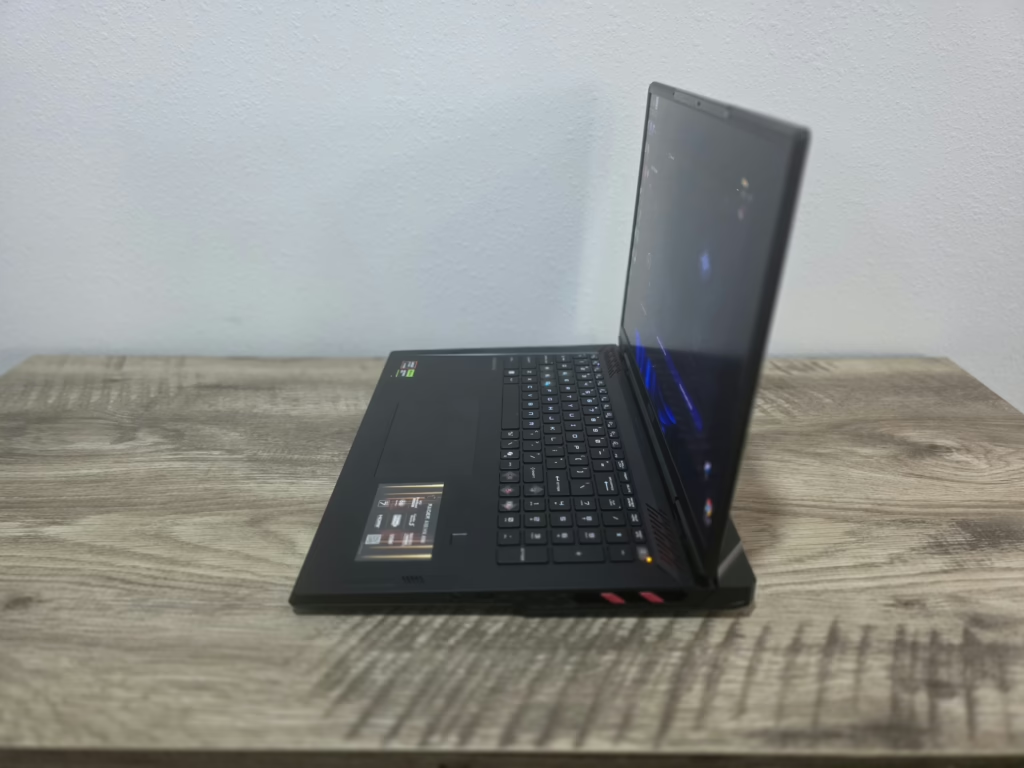
We find it reasonable not to expect hours and hours of battery life with these specs and these massive components that take so much wattage. It is still disappointing, however; no one can argue that. Even with the Ryzen chip, users should expect that this is the most powerful laptop with a battery backup.
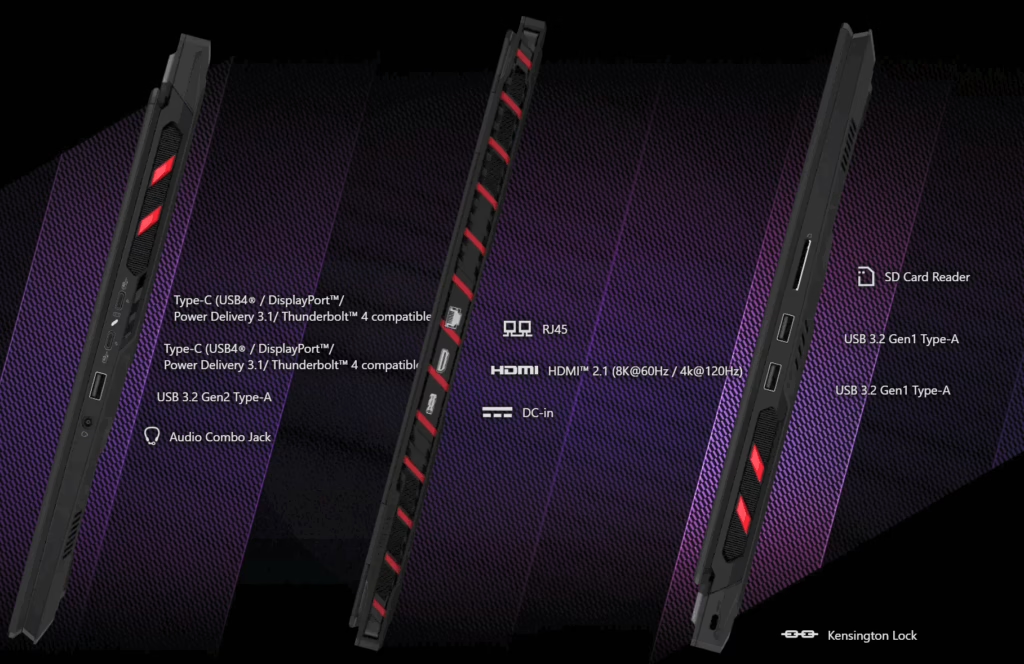
The Raider sticks to MSI’s aggressive “gamer” aesthetic. Angular lines, RGB lighting, bold branding — it’s all here. The Mystic Light RGB strip along the front is still eye-catching, but also unnecessary. There’s a blend of aluminum and plastic in the chassis, and while it feels sturdy enough, it doesn’t scream sleek — especially when compared to machines like the Razer Blade 16 or Alienware’s more polished builds. Still, we like the design — we just wish it were much, much lighter. MSI is looking into composite materials when we asked them, and they will look into this for future models.
Thermals and Acoustics
With Cooler Boost 5—2 fans, 7 heat pipes, and a dedicated PCIe Gen5 SSD cooling chamber, the Raider A18 HX keeps temps reasonable. During stress testing, the CPU peaked around 92°C and the GPU hovered in the mid-70s. No thermal throttling, even under sustained Blender rendering.
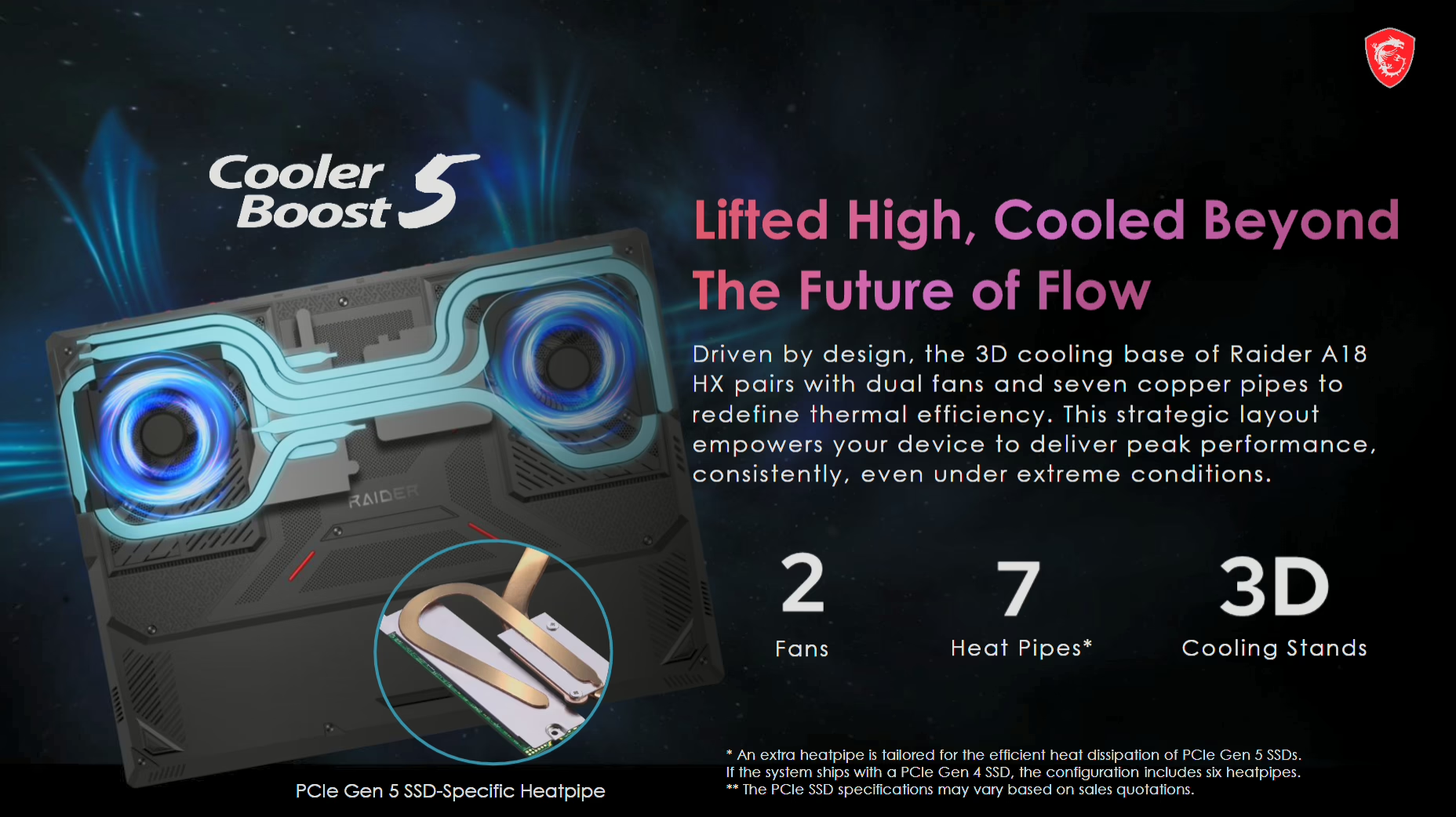
So, how is the noise with the cooling system? Fans are always spinning, and under load, they’ll ramp up considerably – around 45-55 dB in our testing. Not a problem if you game with a headset, and not enough to be a nuisance.
The laptop kept cool, and performance never suffered due to temps in our testing. Under sustained back-to-back heavy benchmarks to stress the system, it never throttled, and the MSI design team nailed it here – it performs the highest intensity tasks with ease and often beats my own Ryzen 9800X3D/5090 combo PC…making me almost immediately look for an upgrade.
Connectivity & Features: Full Arsenal
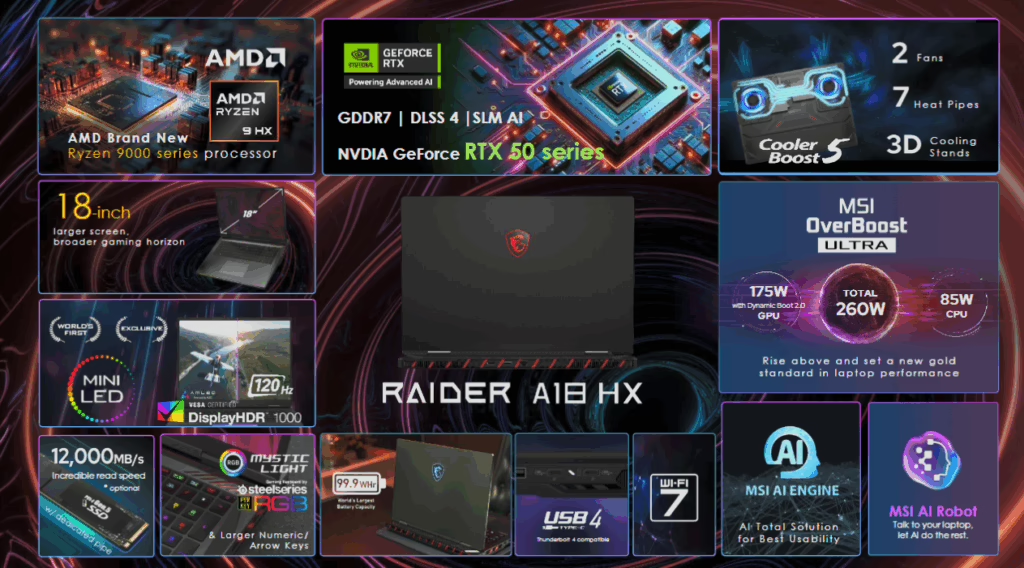
If there’s one area where MSI deserves credit, it’s I/O. The Raider comes loaded with ports and features:
- Memory DDR5, 2 Slots, up to 96GB
- Keyboard Per-Key RGB gaming keyboard by SteelSeries with Copilot Key
- 1 x Audio combo jack, Hi-Res Audio ready
- 2 x USB4® Type-C / DisplayPortTM / Power Delivery 3.1 (Thunderbolt™ 4 Compatible)
- 1 x USB 3.2 Gen2 Type-A
- 2 x USB 3.2 Gen1 Type-A
- Card Reader 1 x SD Express Memory Card Reader
- Video Output 2 x ThunderboltTM 5 (DisplayPortTM/ Power Delivery 3.1)
- 1 x HDMITM 2.1 (8K@60Hz / 4K@120Hz)
- Communication Gigabit Ethernet (up to 2.5GbE)
- Wi-Fi 7, Bluetooth v5.4
- Webcam IR FHD type (30fps@1080p) with HDR & 3D Noise Reduction+ (3DNR+)
- Security Firmware Trusted Platform Module(fTPM) 2.0 / Fingerprint Reader / IR
- Webcam / Webcam Shutter / Kensington Lock
- Battery 4-Cell, Li-Polymer, 99.9Whr
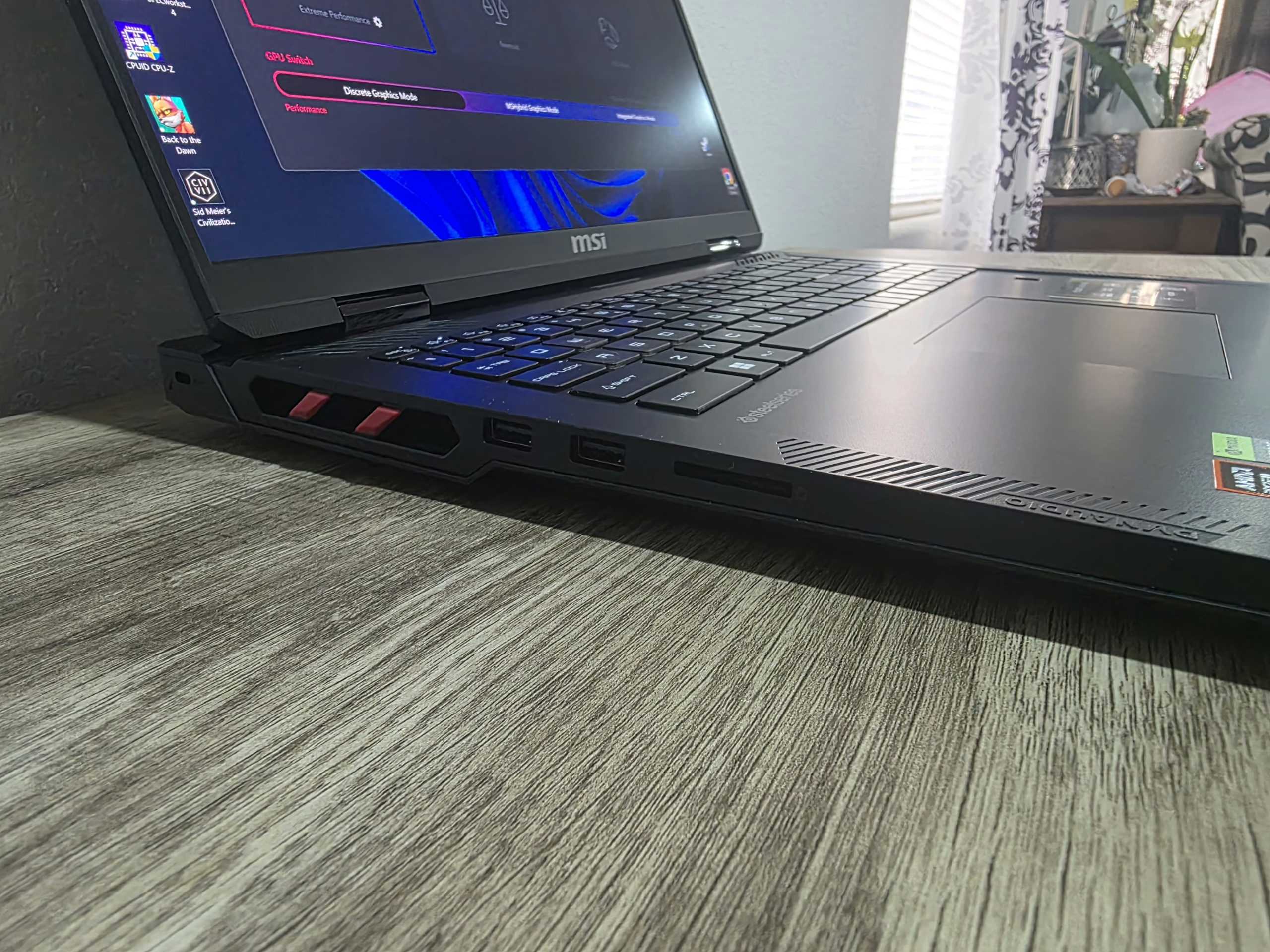
Wi-Fi 7 and Bluetooth 5.4 round things out well, and speeds were blazing fast — although limited in our testing as we have a 1000 Mbps connection ourselves, but speeds were consistently matching and outpacing other devices in our home. There’s also a hardware webcam shutter, which is a nice touch.
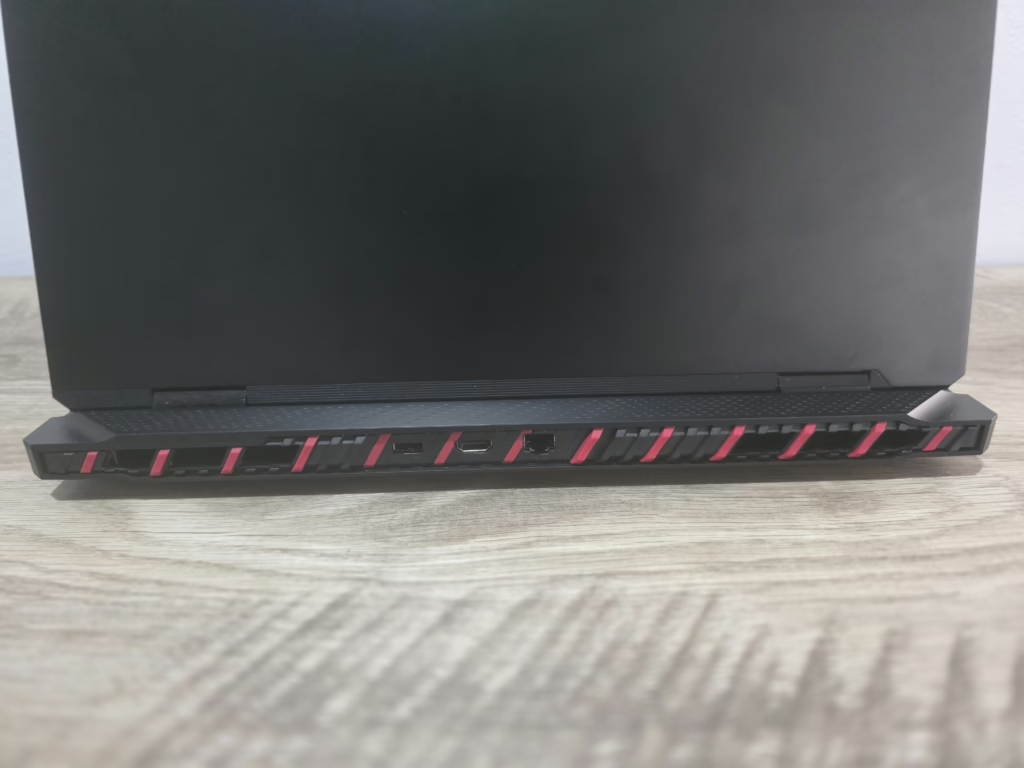
Internally, you get support for PCIe Gen5 SSDs, upgradeable RAM, and dual M.2 slots. MSI’s software stack—MSI Center, SteelSeries GG, and App Player—gives users plenty of customization. OverBoost Ultra is the crown jewel, unlocking up to 260W total system power.
Audio
The Dynaudio six-speaker array (4×2W tweeters + 2×2W woofers) is ambitious and, in many respects, delivers. Volume levels are excellent — more than enough to fill a room — and spatial separation is surprisingly good for a laptop, making dialogue in movies and positional cues in games easy to pick out. For casual media, YouTube, or conference calls, it’s more than capable.
Where it falls short is the low-end response. The woofers add some presence, but they don’t provide the kind of bass weight you’d expect at this price tier. Competing premium laptops — especially some with tuned soundbars or larger resonance chambers — can offer a fuller, more cinematic profile. Here, the Raider’s sound signature is bright and clear rather than rich and deep.
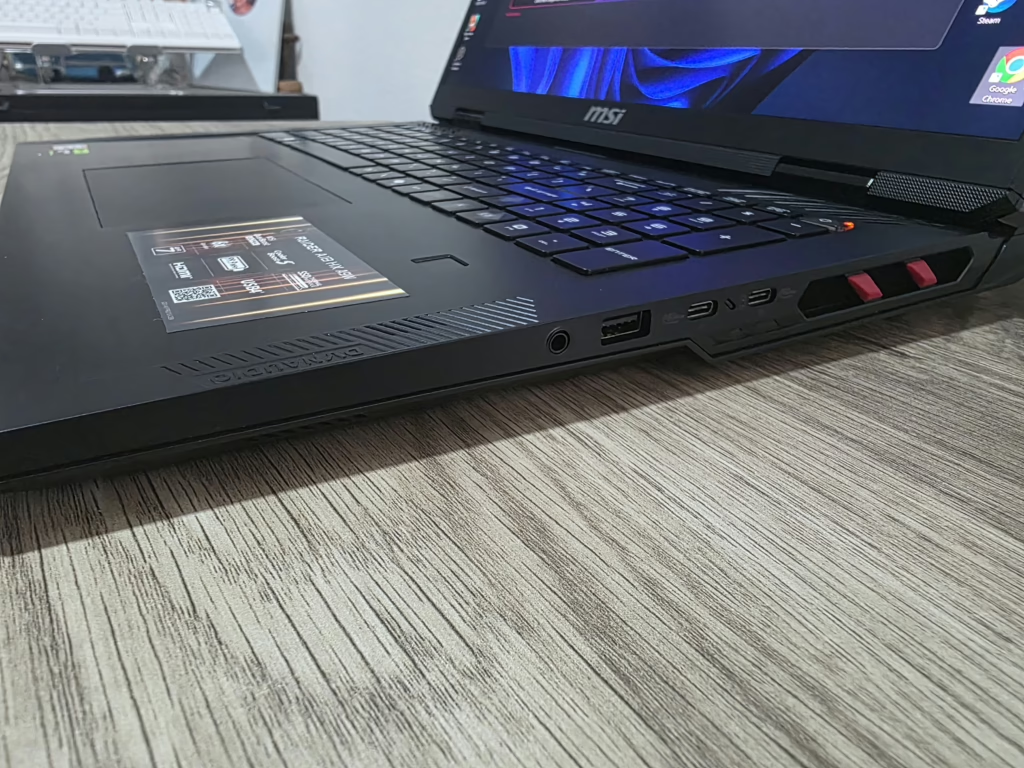
That said, paired with the Raider’s gorgeous Mini-LED panel, the audio experience is still enjoyable. The system gets loud without distorting, and MSI clearly prioritized clarity over gimmicks. For serious gaming, movies, or music, most users will still prefer a good headset or external speakers — but that’s true of nearly every high-performance laptop.